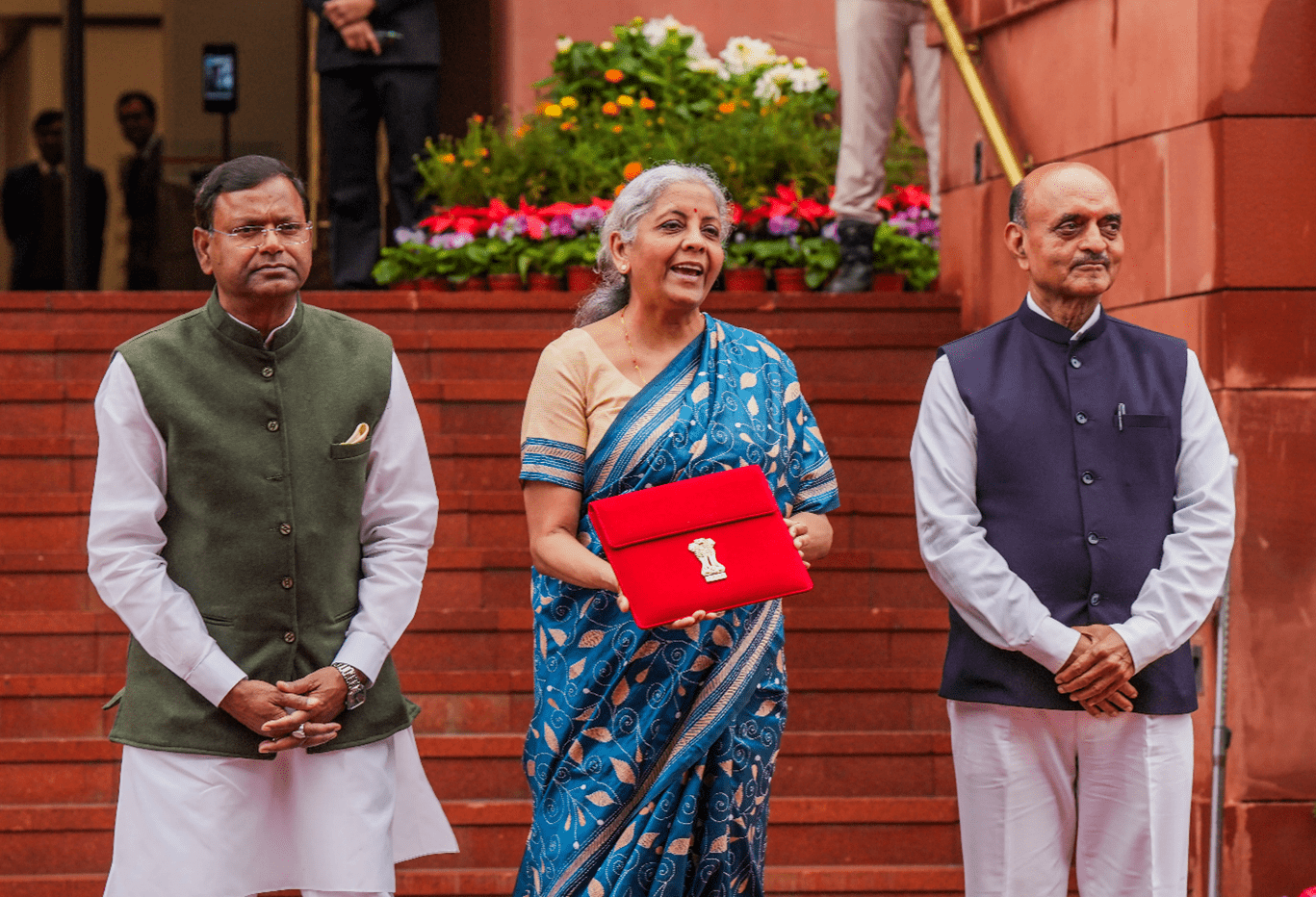Safeguarding India's Environment: Budget Allocation for Conservation Efforts

Introduction
The Interim Budget for the fiscal year 2024-2025 in India marks a significant milestone in the nation's journey towards sustainability and environmental stewardship. Despite being an interim budget, it lays down a comprehensive blueprint for achieving energy sustainability, promoting renewable energy, and fostering a conducive environment for private sector engagement in the clean energy revolution. Here, we delve into the key initiatives, policies, and investments outlined in the budget, analyzing their implications for India's sustainable future.
Green Hydrogen Mission

Image 1: Budget allocation to different major schemes this year (one-third of the major schemes are targeted for achieving a sustainable economy and net zero.)
The Interim Budget earmarked a substantial corpus of INR 600 Crores under the National Green Hydrogen Mission, doubling the allocation compared to the previous year. This significant funding underscores India's commitment to developing a sustainable green hydrogen sector, essential for achieving global carbon neutrality goals. However, challenges such as cost disparity and technical feasibility remain, necessitating continued fiscal and technical support.
Solar Power Grid Infrastructure
With a fiscal allocation of INR 8,500 Crore, the development of solar power grid infrastructure received a substantial boost. This increased budgetary allocation will not only enhance the transmission infrastructure but also encourage the development of a robust ecosystem for renewable energy in the country.
Pradhan Mantri Suryodaya Yojana (PMSY)
The cornerstone of the energy impetus in the Interim Budget was the PMSY, aimed at installing rooftop solar power systems in one crore households. While this initiative holds immense potential to promote solar energy adoption, addressing challenges such as low installation rates and the need for infrastructure investment in distribution companies is imperative for its success.
Viability Gap Funding (VGF) for Offshore Wind Energy
The announcement of VGF for offshore wind energy projects reflects the government's commitment to diversifying the renewable energy portfolio. This initiative, coupled with mandatory blending of compressed biogas, underscores India's resolve to mainstream eco-friendly energy generation alternatives.
Electric Vehicle (EV) Ecosystem
The budgetary support for expanding and strengthening the EV ecosystem is a paradigm shift in India's transportation landscape. By promoting manufacturing and charging infrastructure and emphasizing e-buses for public transport networks, India aims to reduce carbon emissions and develop a decentralized energy storage ecosystem.
Augmenting Environmental Conservation Efforts

Image 2: Finance Minister Nirmala Sitharaman Presenting Interim Budget 2024-25
Budget Allocation for the Ministry of Environment
The allocation of Rs 3,265 crore to the Ministry of Environment, Forest and Climate Change is a testament to the government's unwavering commitment to environmental conservation. This substantial allocation underscores the significance of addressing environmental concerns and mitigating the impacts of climate change. However, while this allocation is commendable, it is essential to recognize that India's mandate for environment and climate change is expanding rapidly. As such, a commensurate increase in allocation is imperative to effectively address the multifaceted challenges posed by environmental degradation and climate change. This increased funding will enable the Ministry to implement robust conservation strategies, enhance monitoring and enforcement mechanisms, and invest in research and innovation to tackle emerging environmental threats.
National Mission for a Green India
The bolstering of the budget for the National Mission for a Green India reflects the government's proactive stance towards enhancing forest cover and preserving existing forest land. This mission holds significant importance in India's conservation efforts, serving as a cornerstone for biodiversity conservation and ecosystem restoration. By prioritizing the protection and sustainable management of forests, the government aims to safeguard crucial habitats, promote biodiversity conservation, and mitigate the adverse impacts of deforestation and habitat loss. Furthermore, the National Mission for a Green India plays a pivotal role in fostering community participation and empowering local communities in conservation efforts. Through afforestation, reforestation, and sustainable forest management initiatives, this mission contributes to India's broader goals of achieving ecological sustainability and promoting inclusive and equitable development.
Fostering Private Sector Engagement in Clean Energy

Graph: Private Sector Engagement in Clean Energy in FY 21/22
The Interim Budget of 2024 offers a strategic platform to catalyze private sector involvement in spearheading the clean energy revolution. Recognizing the pivotal role of the private sector in driving innovation, investment, and technological advancement, the government aims to leverage this potential to accelerate India's transition towards sustainable energy sources.
Introduction of Innovative Financing Mechanisms: One of the key strategies outlined in the Interim Budget is the introduction of innovative financing mechanisms tailored to incentivize private sector investment in clean energy projects. By offering incentives such as tax breaks, subsidies, and preferential loan terms, the government seeks to make clean energy investments more attractive to private investors. Additionally, the budget emphasizes the exploration of new financial instruments such as green bonds, venture capital funds, and public-private partnerships to mobilize capital for renewable energy initiatives.
Streamlining Policy Frameworks: Another critical aspect addressed in the Interim Budget is the need to streamline policy frameworks governing the clean energy sector. By simplifying regulations, reducing bureaucratic hurdles, and providing clarity on investment guidelines, the government aims to create a conducive environment for private sector participation. Clear and transparent policies will instill confidence among investors, foster long-term commitments, and stimulate innovation and entrepreneurship in the clean energy space.
Mitigating Investment Risks: Recognizing the inherent risks associated with clean energy investments, the Interim Budget proposes measures to mitigate these risks and enhance investor confidence. This includes initiatives to address regulatory uncertainty, market fluctuations, and project-specific challenges that may deter private sector involvement. By offering risk-sharing mechanisms, insurance products, and regulatory guarantees, the government aims to de-risk investments and create a more stable and predictable investment climate for clean energy projects.
Conclusion
India's 2024 Budget lays down a roadmap for a sustainable and resilient future. By prioritizing renewable energy, environmental conservation, and fostering private sector engagement, India is poised to emerge as a global leader in sustainability. As the nation navigates towards a greener tomorrow, collaboration between the government, private sector, and civil society will be paramount in achieving India's sustainable development goals.
With its commitment to sustainability and environmental stewardship, Calculus Carbon stands ready to support India's journey towards a greener future. As an environmental commodities market maker, we actively collaborate with stakeholders to foster green financing for impactful projects, contributing to India's sustainable development agenda. Join us in shaping a sustainable future for generations to come.



